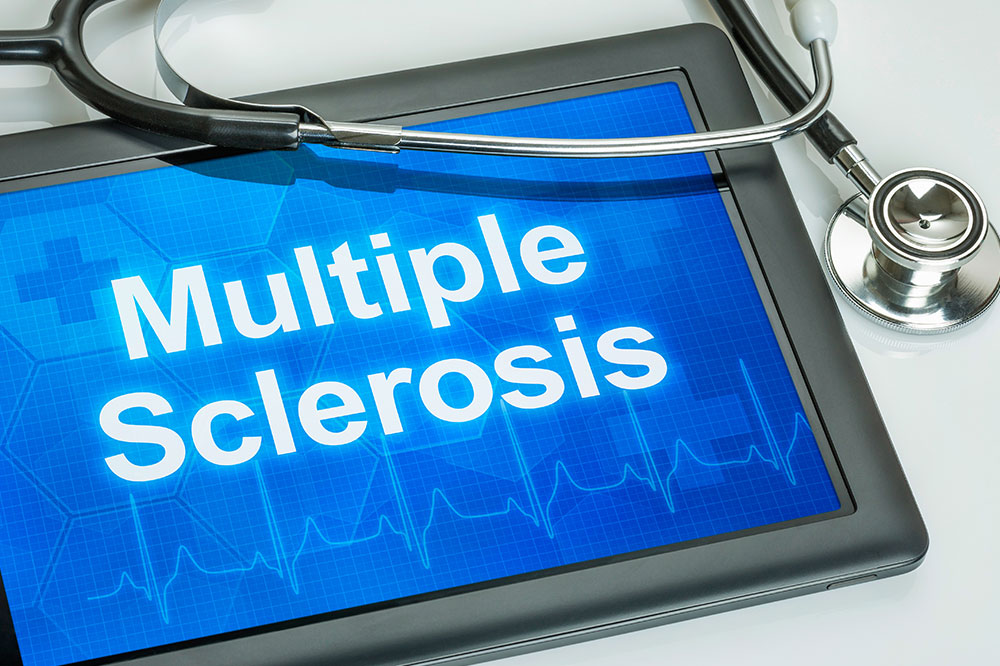
Multiple sclerosis – Types, signs, and risk factors of the condition
Multiple sclerosis, commonly known as MS, is a chronic and disabling neurological disorder. It is mainly observed and diagnosed in young adults between the ages of 20 to 40. An autoimmune condition, MS is a result of immune cells attacking the myelin sheath that protects nerve fibers. This leads to communication issues between your brain and other body parts. Read on to know about the types, common symptoms, causes, and treatment options for MS.
Types of multiple sclerosis
There are four types of multiple sclerosis:
Clinically isolated syndrome (CIS)
This is where an individual experiences only one episode of MS. The episode is similar to experiencing multiple sclerosis symptoms, but the person cannot be diagnosed with MS yet.
Relapse-remitting MS (RRMS)
If the individual has a second or continues to have more episodes of MS, it is usually diagnosed as relapse-remitting MS. This is the most common form of MS. Symptoms can worsen or increase followed by periods of remission.
Primary progressive MS (PPMS)
Primary progressive MS is when the symptoms worsen instead of going into remission or relapse.
Secondary progressive MS (SPMS)
A person is diagnosed with secondary progressive MS when the disease starts to progress steadily.
What are the common symptoms of multiple sclerosis?
Multiple sclerosis affects the central nervous system (CNS) that controls all the actions that we carry out. This leads to a wide range of symptoms that affect different functioning parts of the body. Here are some of the common signs of multiple sclerosis:
Muscle weakness
One of the most common symptoms of MS is muscle weakness. This weakness is usually caused by a lack of use or stimulation as a result of nerve damage.
Numbness
Another common sign is numbness or pins and needles sensation in the body, face, arms, and legs. Numbness and tingling sensations are some of the earliest signs of MS.
Bladder issues
Individuals who have multiple sclerosis may also develop bladder issues. This could include trouble with emptying the bladder, having to urinate frequently, or loss of bladder control. A person may also suffer from incontinence, which causes them to urinate suddenly.
Individuals may also experience Lhermitte’s sign, excessive fatigue, muscle spasms, and even develop sexual dysfunction. Vision troubles, mobility issues, memory problems, constant pain, and urinary tract infections are also common in multiple sclerosis patients. Some individuals may experience mild symptoms whereas others may experience symptoms that can even lead to disability.
Risk factors of multiple sclerosis
There is no known cause of multiple sclerosis. But studies have indicated that there are certain factors that could contribute to an increased risk of developing this condition. These factors include:
Age
Studies suggest that most people who are diagnosed with MS are between the ages of 20 to 40.
Gender
Most types of MS are twice as likely to be diagnosed in women rather than men.
Genetic predisposition
Certain genetic features and susceptibility may be passed down from generation to generation.
Infections
Exposure to certain viruses such as mononucleosis or human herpes virus type 6 could increase the risk of developing MS.
Vitamin deficiency
Individuals who have vitamin D and vitamin B12 deficiencies are more prone to developing MS.
There is no single trigger for multiple sclerosis. Scientists believe that multiple factors contribute to the development of this condition.
Home remedies and foods for multiple sclerosis
Besides various environmental and genetic factors, even food and nutrition can influence the development of multiple sclerosis. This is why maintaining a proper food plan, eating certain foods, and avoiding others can help in managing this disorder to a certain extent.
One should consume foods that slow down the progression of the condition and that alleviate side effects. Such foods include fruits, vegetables, nuts, seeds, eggs, dairy products, probiotic foods, and herbs. It is best to opt for foods that are rich in antioxidants and vitamins.
On the other hand, certain foods should be avoided as they can increase inflammation and worsen the symptoms of MS. High-fat dairy products, salty foods, saturated fats, processed meats, refined carbs, and sweetened beverages should be avoided as they can increase inflammation and lead to other secondary conditions.
Treating multiple sclerosis
There is no cure for multiple sclerosis. However, there are various treatment options that focus on slowing down the progression of the condition. There are various oral, injectable, and infused treatments that can help keep the symptoms at bay, especially during the early stages of MS.




